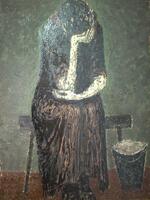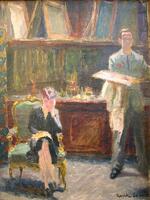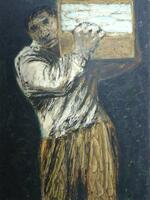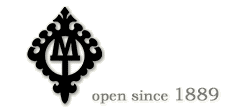







 |
|
|
MAREK ŻUŁAWSKI (1908 - 1985). AN INFINITE QUEST
|
|
|
February 6, 2009 - March 29, 2009
The Museum of the Zakopane Style
at Koliba villa
ul. Kościeliska 18, Zakopane
This exhibition showcases a selection of Marek Żuławski's paintings and drawings from different periods, as well as the artist's commentary on art. It testifies to Żuławski's life-long quest for the most appropriate means of artistic expression and for his own creative path in times of continuous and sometimes extreme transformations in art.
Marek Żuławski (1908-1985) was the son of Jerzy Żuławski, a nationally acclaimed literary figure. He spent his childhood in Zakopane, where the Żuławski family lived in Łada villa (designed by the creator of the Zakopane Style, Stanislaw Witkiewicz) until 1920. Marek Żuławski and his brothers Juliusz and Wawrzyniec climbed a lot during their youth in Zakopane and were the first to ascend many Tatra summits. After completing secondary school in Toruń, Marek Żuławski moved to Warsaw to study painting at the Warsaw Academy of Fine Arts. In 1935, after graduating, he left Poland and settled in London two years later, where he lived until the end of his life. In 1986, his widow Maryla Żuławska donated over 100 of the artist's works to the Tatra Museum in Zakopane.
Marek Żuławski's work cannot be attributed to any one modern artistic movement. Even though he performed many formal experiments and drew on his experiences of different painting styles, his paintings were executed in his own very individual manner. For many years, he was connected with the Colorists (the Post-Impressionist group of Polish painters from the 1930s), then referred to as Cubism and Expressionism and showed an interest in Abstractionism and Matter painting, he always looked at other painting movements to enrich his own vision. He was not a revolutionary artist looking for new, undiscovered paths in art; but he knew his subject inside out and cherished it, devoting himself to it for his entire life with unstinting passion.
| |
 |
|
Crying Woman, ca. 1960
|
|
|
| |
 |
|
Self-Portrait, 1940
|
|
|
| |
 |
|
A man carrying a box with fish, 1958
|
|
|

|
|
|
Print
::
|
|















